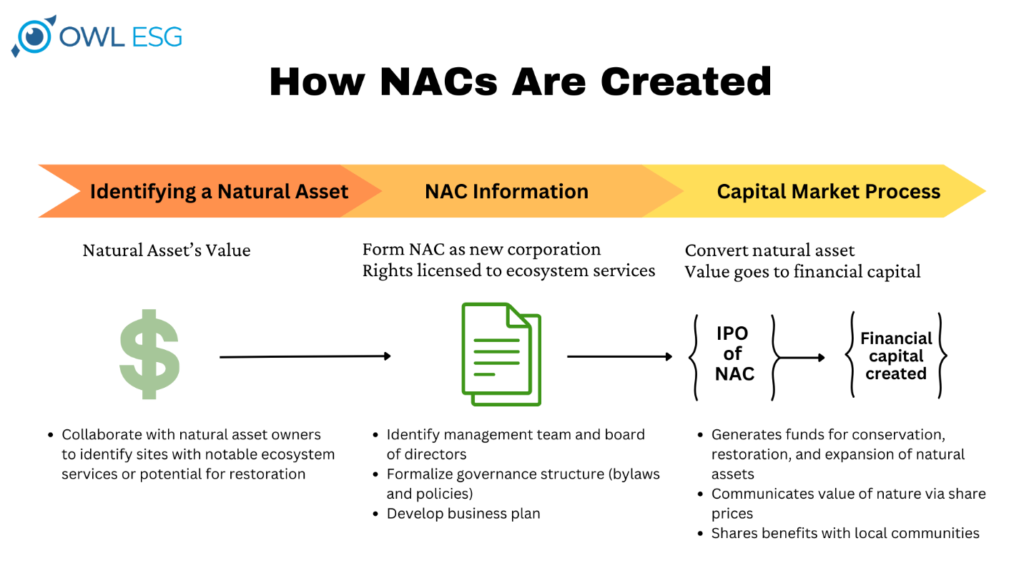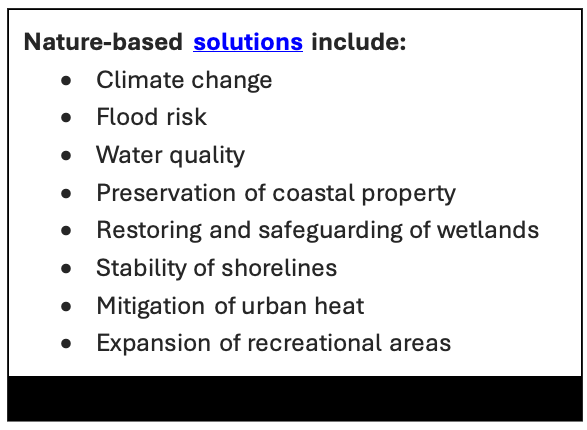In an effort to combat climate change and foster a sustainable economy, the NYSE and Intrinsic Exchange Group(IEG), with the support of the SEC, are at the forefront of introducing Natural Asset Companies (NACs) – a groundbreaking category of listed firms concentrating on nature and its ecosystem in delivering services.
NACs are intended to assign value to the services that are inherently provided by natural resources, like carbon retention, pest control, and erosion. In simpler terms, they aim to oversee, uphold, or rehabilitate both public and private lands to enhance ecosystems.
Nature’s decline and the urgency for change
Global ecosystems are diminishing at an unprecedented rate. In turn, many species face the risk of extinction, land degradation is undermining productivity, and the heightened threat of climate change is putting millions of people at increased risk from extreme events. Current protective measures cover only a fraction of land and ocean, leaving significant areas vulnerable to potentially irreversible damage.
Today, roughly 16 percent of land worldwide is protected along with 7.74 percent of the ocean. Additionally, around three quarters of all land ecosystems and two-thirds of the ocean have been damaged by human activity. Yet, the price tag for protecting natural ecosystems isn’t cheap. In fact, it’s estimated that $300-400 billion is needed every year to preserve and restore them. On average, conservation projects only receive $52 billion a year, which mostly comes from public and philanthropic sources.
NACs as a transformative solution
NACs present a unique approach to value creation and resource utilization that leverages their position as a new asset class on the NYSE to translate the value of nature into financial capital. Authorization is required to utilize natural resources within a specified area, a process that’s like water or mineral rights. Public lands have local and national government entities as natural asset owners, while private lands usually see farmers, ranchers, or forest owners in that role.
NAC ownership is distributed among the natural asset owner, investor, and other stakeholders, to which owners then extend rights to the natural asset and ecosystem services of a designated area to the newly established NAC.
When a NAC goes public on the NYSE, the funds generated from the IPO safeguard and enhance the natural assets and their associated ecosystem services. For example, proceeds on agricultural land contribute to the adoption of regenerative practices.
Although having supportive government policies is crucial, the time it takes to produce results can be extensive. Companies may seek to transition to sustainable practices, yet the availability of long-term funds is often limited. Additionally, while philanthropy plays a significant role, it can lack the necessary scale and collaboration needed to make a substantial impact when compared to the substantial capital flows in global stock markets.
Overall, NACs serve as a catalyst, aligning investors seeking evidence-based impact with companies and governments committed to fostering a sustainable future. Investors, including asset owners like pension funds, sustainable funds managed by asset managers, and retail investors, participate in NACs as issuers.
The nature-based solution
The nature-based solution aligns with investor priorities focused on ESG initiatives and offers an additional avenue for governments to collaborate with private sectors for sustainable development.
ESG data can be used to track the environmental and social impact on NACS, while ESG research data can be used to inform investment decisions in NACs. ESG tools can be used to help NACs measures and report their ESG performance.
Nature-based solutions can create traditional economic advantages, such as employment opportunities, enhanced property values, improved public health, and overall economic growth.
Establishing a NAC begins by identifying a natural asset (i.e., lake or forest) calculated by protocols from organizations. The NAC is structured to define ownership rights and governance of the asset’s productivity. Launched through an initial public offering, it generates funds for natural asset management.
In other words, NACs transform the value of natural assets into financial capital to:
- Obtain funding for global ecosystem oversight, fostering a truly sustainable, circular economy.
- Generate financial value for natural asset managers and local well-being.
- Boost employment and economic prosperity in communities through collaborative efforts with nature.
- Introduce price signals reflecting true costs and benefits in goods and services.
- Provide investors with a unique portfolio tool for direct nature preservation investment.

Natural assets produce an estimated $125 trillion annually in global ecosystem services like carbon sequestration, biodiversity, and clean water. As a result, IEG has created an accounting framework to measure ecological performance. As publicly traded equities, NACs empower investors for efficient capital allocation to meet sustainability goals.
Concerns about NACs
Despite their potential, NACs face a spectrum of concerns. Critics question the ethics of assigning a financial value to elements of nature that should be freely accessible to all. Worries about property rights, foreign investment, and the viability of NAC investments have also surfaced. These include potential alterations in land management practices, skepticism about monetizing ecosystem services, and fears of national security risks tied to foreign influence over U.S. land resources.
- Ownership of Nature: Critics argue that NACs raise issues by putting a price tag on elements of nature that should be free and accessible to everyone.
- Property Rights and Foreign Investment: Worry exists regarding potential strict management restrictions on public lands and increased foreign investment, raising concerns about national sovereignty and security.
- Viability Questions: Doubts are raised about the practicality of NAC investments, questioning whether generated revenue can effectively support conservation efforts while remaining profitable for investors.
- Impact on Land Management: NACs may significantly alter land management, potentially restricting various uses and recreational activities, indicating a departure from local control and traditional land-use practices.
- Carbon Credits and Environmental Impact: The suggestion of monetizing ecosystem services through carbon credits faces scrutiny, with doubts emerging about the effectiveness and transparency of such credits.
- National Security Risks: There’s apprehension that NACs could enable foreign powers to control significant U.S. land resources, posing concerns about intelligence collecting and other security risks.
These critiques highlight the complex and multifaceted challenges that need to be addressed to ensure the responsible and effective implementation of NACs in the realm of natural resource management and conservation.
Unlocking potential with NACs
The ongoing harm caused by the current approach to nature, where financial incentives often favor options detrimental to the environment, necessitates a shift in the equation. NACs provide an avenue to redirect resources toward good management of natural assets, offering rewards for preservation rather than exploitation. By tapping into the productivity of natural assets, NACs can utilize raised capital to execute sustainability plans, transforming the value of nature into a driving force for positive change.
As NACs emerge as a transformative solution, they follow a structured process, including delineating natural resource zones, evaluating their value, securing rights, appointing leadership, and initiating public offerings. This process aims to efficiently distribute capital, fostering a genuinely sustainable, circular economy, generating financial value for natural asset managers, and introducing price signals reflecting the true costs and benefits of goods and services.
The controversy surrounding NACs underscores the need for comprehensive examination and responsible implementation. While addressing the multifaceted challenges, NACs present a hopeful and innovative path toward sustainable conservation and economic growth.





